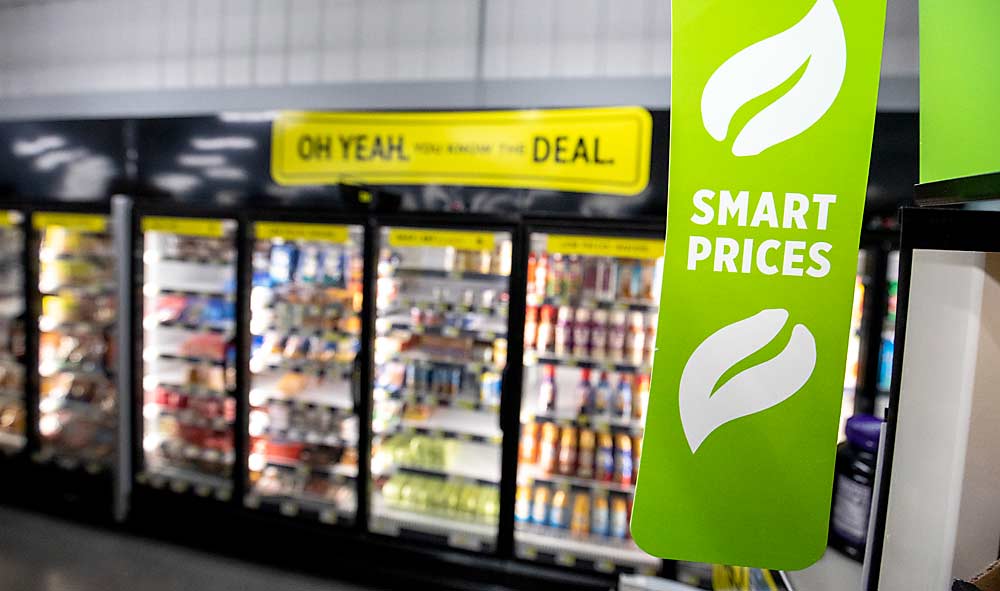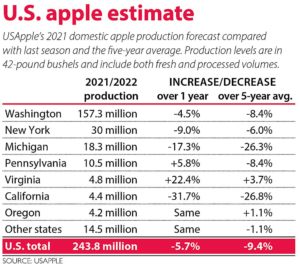
U.S. apple consumption has declined over the past couple of decades, but demand for apples remains strong and alternative sales channels are creating new opportunities, said Steve Lutz, senior vice president of insights and innovation for Category Partners.
Lutz spoke during the U.S. Apple Association’s Outlook Conference in Chicago. He said one of the alternative channels is online, or e-commerce, sales, which have spiked during the coronavirus pandemic.
Online sales have always been a struggle for the food category, especially for produce. It’s hard for consumers to assess fruit quality from a computer or phone. But many shoppers have recently decided that they like buying produce online, and will continue to do so, Lutz said.
Chris Gerlach, USApple’s director of industry analytics, said the embrace of e-commerce shopping was the most significant consumer trend to come out of the pandemic. By the first quarter of 2021, e-commerce accounted for 3.5 percent of food and beverage store sales, worth $6.9 billion — an increase of more than 377 percent.
Another promising opportunity is the growth of dollar stores, which now outnumber supermarkets in the United States. Chains such as Dollar General and Dollar Tree have not been “front and center” in selling apples, but the stores have plans to expand into fresh produce sales. The produce departments at such stores will most likely be smaller than the apple display at a typical Walmart and will require more precise packaging — perhaps two-packs or four-packs of apples, Lutz said.
Wherever they’re sold, apples are a complex item for produce departments to manage. The number of varieties and their battle for shelf space adds to that complexity. Newer, branded varieties and Honeycrisp — “the big anomaly” due to its high price points — are slowly gaining market share from more traditional varieties. The growth of Cosmic Crisp will intensify the competition. And although the varietal mix might lead to challenging decisions for stores, it creates interest on the part of consumers, who can be persuaded to try something new. Fortunately, the quality and eating experience of newer varieties is better than ever, Lutz said.
There’s still plenty of space in consumer stomachs for fruit. Rachel Cheatham, founder and CEO of Foodscape Group, told the USApple audience that 80 percent of the U.S. population still does not meet the U.S. Department of Agriculture’s minimum recommendations for fruit consumption.
Trade
Michael Anderson, vice president of trade and industry affairs for the Corn Refiners Association, discussed the U.S. trade situation several months into a new administration. President Biden succeeded a president who had “flipped the script” on trade policy, favoring individual trade deals over more comprehensive agreements. The Biden administration has announced that no new trade agreements will be sought for the time being and has put a pause on pending agreements. As the administration reviews its overall policy with China, China’s 55-percent tariff on U.S. apples is still in place, and probably will be for a while, Anderson said.
Despite the trade turbulence of the past few years, Gerlach said the U.S. apple industry still retains a positive trade balance. In the 2020–21 crop year, the U.S. exported almost 41 million bushels of fresh apples while importing around 5.2 million bushels, a net export of 35.6 million bushels valued at almost $773.8 million.
“On a year-over-year basis, while the balance of trade has declined with respect to quantity, it has increased in value,” Gerlach said. “This is primarily being caused by a rapid decline in the value of imports from the 2019–20 crop year, but is also due to some resilience in export values which have not decreased as much relative to export quantities.”
—by Matt Milkovich







Leave A Comment